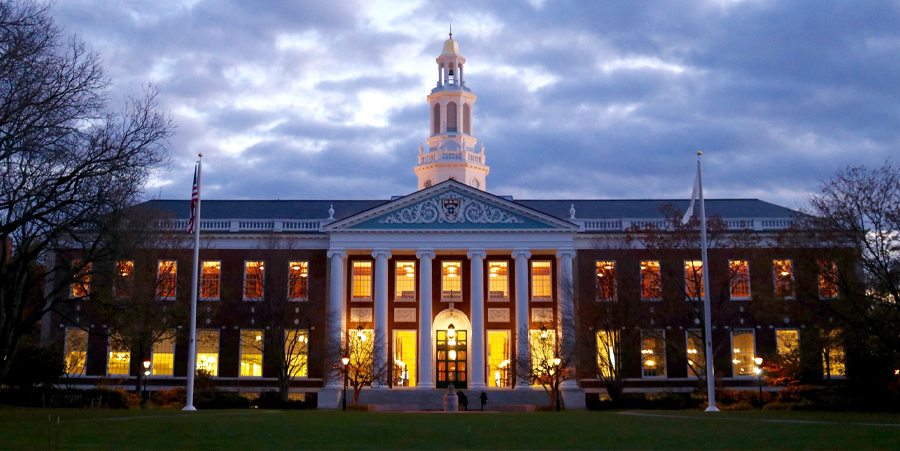So far, so good.
In lecture courses, claimed a Harvard professor, students ” are waiting for you to give the ‘answer ‘ “. There is a built-in bias against action. What we say with the case method is : ” Look, I know you don’t have enough information, but given the information you do have, what are you going to do? “.
Consider a typical scenario. James is the CEO of MegaCorp Inc. What should the company do now? The professor and almost 90 of James’ classmates anxiously await his response to the totally ‘ cold call ‘- designed to ensure that students have prepared the case. James did give it a long thought. After all, he was told that the case study method is intended to ” challenge conventional thinking “. He has also been reminded that good managers are decisive, good MBA students must take a stand. So James swallows hard and answers the question.
” How can I answer the question? “- James begins. ” I barely heard about MegaCorp Inc before yesterday. Yet today, you want me to pronounce on its strategy. As is typical at Harvard, James was working on two other case studies the previous night, so he barely had a couple of hours to prepare on the MegaCorp Inc case. He had never knowingly used any of the MegaCorp products. Until the previous day he did not even know that the rat poison that he used on his basement was made by the same MegaCorp Inc. He had never visited any of its factories nor has been anywhere close to ‘ You Never Know Where, Newfoundland ‘, where MegaCorp is headquartered. He has never spoken to any of the company’s customers(except of course himself). James says ” My previous experience(the little there was) took place in a furniture company. MegaCorp is a high-tech company and I am a very low tech guy. All I have to go by are these few pages. This is a superficial exercise. I refuse to answer your question “.
What happens to James? At the business school, I will let you hazard(?) a guess. But from there James moves back to the furniture business, where he immerses himself in the products, the process, the people. And with his courage to be decisive and with an appetite to challenge conventional thinking, James rises to the position of the CEO. There with hardly any ‘ industry analysts ‘ at all, James and his colleagues learn their way to a strategy that transforms the furniture business.
Meanwhile, John, who is sitting next to James in class jumps in. He too has never been to ‘ You Never Know Where, Newfoundland ‘. But that doesn’t stop him.He makes a clever point or two and gets that coveted Harvard MBA. This gets him into a ‘ prestigious consulting firm ‘, where as in those case study classes, he leaps from one situation to another, each time making a clever point or two, concerning issues he recently knew nothing about, always leaving the firm before implementation (action) begins.
As this kind of experience rolls in, John doesn’t take far too long in becoming the CEO of a major appliance company.(He never consulted for one but it does remind him of that MegaCorp case study). There, after downsizing( it’s fashionable you see) a few thousand unsuspecting Human Resources, he formulates a glitzy high-tech strategy, which is implemented, so to speak, through a dramatic program of acquisitions. What happens to that?? Guess again!
Readers (of the book ‘ What they Really Teach You At Harvard Business School ‘by Philip Delves Broughton) are probably asking , ‘ Read the case and do that analysis in two to four hours?’ Harvard’s answer is YES. Students need to prepare two to three cases each day..so (they) must work toward getting their analysis done fast as well done well.
Some years back, HBS ran an ad in The Economist for it’s executive education programs. It had a dapper, uber smart looking executive-woman saying, ” We studied four companies a day. This isn’t theory. This is experience.”
Sorry. This is nonsense.
There was a book released in 1990 called ‘ Inside the Harvard Business School ‘ by David Ewing, for long, an insider. The first line of the book makes a sweeping statement ” The Harvard Business School is probably the most powerful private institution in the world “.The book listed 19 Harvard alumni who had made it to the very top, the school’s superstars as of 1990. If you took a look at the post 1990 records of all 19, to see how they fared, there was only one word to describe it- BADLY. 10 of them clearly seem to have failed(meaning their company went bankrupt), they were forced out of the CEO chair or a major merger backfired, or the like. Performance of another four appeared to be very questionable. The other five seem to have done fine.
To conclude, most MBA students enter the prestigious HBS or similarly profiled hallowed Ivy Leagues smart, determined, aggressive. There, case studies teach them how to pronounce clearly on situations they know little about , while analytic techniques give them the impression that they can tackle any problem- no in-depth experience required. With graduation comes the confidence of having been to a proper business school, not to mention the ‘ old boys ‘ network that can boost them to the top. Then what??
Begs the question!! Case Study or Case Unsteady?
Ready. (Case) Study. Go!!
ENDS
…


